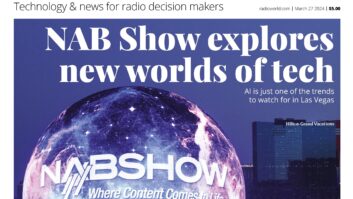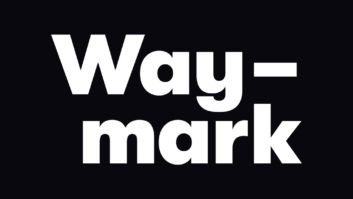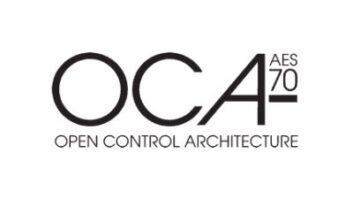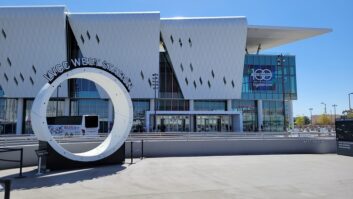IBOC Update – Apr 27, 2005
Apr 27, 2005 10:11 AM, By Mark Krieger, CBT
Stay up to date on the latest IBOC news, business and technology information with the twice-monthly newsletter from Radio magazine.
Index:
- DRM Action at NAB2005
- Charlotte’s WFAE First to Test Three Program Channels
- Several HD Radio Products Debut at NAB2005
- WGUC Continues Surround Performance Testing Using Neural
- BE to Host Technology Training For Radio Consultants
- Beasley Debuts Commercial Multicasting at NAB
- RAB Touts HD Radio Benefits in White Paper
- NRSC Gives Nod to IBOC Digital Standard
- An Introduction to the New Language Surrounding HD Radio
- IBOC by State: Maryland
- Yamaha Introduces High�End Home Receiver With HD Radio
To receive these articles twice a month in your e-mail, subscribe to the IBOC Update – Insight on HD Radio e-newsletter. Click here to subscribe.NewsDRM Action at NAB2005
Digital Radio Mondiale (DRM) made a splash at NAB2005 with presentations and demonstrations of DRM transmission technology. At the NAB’s Broadcast Engineering Conference DRM was featured in the International Radio Update session on Sunday, April 17, as Chairman Dr. Donald Messer (director, spectrum management division, DRM member IBB/VOA) presented “The DRM Digital Modulation System: Performance in the AM band, including Comparisons with Amplitude Modulation.”DRM members were also showcasing live DRM demonstrations and a range of DRM-capable equipment throughout the exhibit halls:Continental Electronics demonstrated the DRM conversion process for its Type 418 100kW short-wave transmitter, a technique applicable to any type, model or make of short-wave transmitter equipped with Continental’s solid state modulator. The demonstration details the interface between the transmitter and Telefunken’s DRM-DMOD2 exciter, and includes measured DRM performance data from an actual transmitter. Continental also showcased live DRM broadcasts, using a Telefunken DRM-DMOD2 exciter in tandem with a Coding Technologies’ Digital World Traveler USB port receiver.RIZ-Transmitters featured live demonstrations of the RIZ Compact Audio Solution, which produces a DRM signal from stereo audio sources. Also on display is the company’s MDI Modulator, which produces a DRM signal from a DRM/DI stream. RIZ also used NAB as an opportunity to introduce its next generation of DRM exciters, which incorporate SFN support, two independent RF output signal channels and linearization feedback.Kintronic Laboratories displayed MW directional antenna system hardware, which the company says is ready for AM IBOC systems including DRM.Nautel showcased three DRM-compatible transmitters including 1 kW, 12kW and 50kW AM models.Telefunken Sender Systeme Berlin AG exhibited its DRM exciter, the DRM DMOD2 with advanced precorrection capability. This unit includes a multiplexer and synthesizer for use in the frequency range between 9kHz and 27MHz, and accommodates future system extensions with hardware and software upgrades. The DRM Contentserver by Fraunhofer was also on display here.Thales Broadcast & Multimedia featured DRM audio demonstrations and an animated slide show that included headset monitoring.Charlotte’s WFAE First to Test Three Program Channels
The first live test of two supplemental audio channels over HD Radio took place earlier this month at NPR Affiliate WFAE-FM in Charlotte, NC.The test comes about one year after initial on-air testing of NPR’s Tomorrow Radio project and follows on the heels the FCC’s March 8 announcement clarifying experimental licensing of Secondary Program Services (SPS).”This is an important milestone for NPR stations that have multiple programming services in need of an outlet for transmission,” said Mike Starling, vice president for engineering and operations for NPR.Starling said that NPR has previously conducted lab tests of multiple supplemental audio channels but this is the first on-air demonstration of two supplemental channels building on public radio’s commitment to Tomorrow Radio.For the tests, WFAE provisioned the HD Radio bandwidth for the main HD Radio program channel at 64kb/s and the two additional supplemental audio channels at 16kb/s each. Monitoring of the signal was performed using a modified Kenwood KTC-HR100 receiver.”We’re challenged every day to provide additional program services in an overcrowded RF market, so we’re excited at the possibilities of increasing our market exposure with these supplemental audio channels,” said Roger Sarow, general manager of WFAE-FM.The station plans to add text radio services as well, and will use on-the-fly provisioning capabilities of its Broadcast Electronics IDI 20 importer to scale bandwidth as needed for the HD Radio hybrid signal.Prior to the test, WFAE-FM acquired Broadcast Electronics transmitters and exciters for transmission and signal generation of HD Radio on its main signal and another similar system for its station in Hickory, N.C.BusinessSeveral HD Radio Products Debut at NAB2005
ADA, Polk, Radiosophy, Rotel, Sanyo and Yamaha all introduced new HD Radio receivers at NAB2005 in response to a growing number of HD Radio stations on the air. Polk Audio and Radiosophy debuted HD Radio tabletop receivers and Sanyo introduced an in-dash receivers. Yamaha, ADA and Rotel exhibited home receivers.Panasonic debuted the industry’s first car audio receiver with integrated HD Radio tuner in the spring of 2004 and recently introduced its second-generation mobile CD receiver with integrated HD Radio, model CQ-CB8901U.WGUC Continues Surround Performance Testing Using Neural
WGUC-FM in Cincinnati has successfully broadcast a prerecorded performance of the Cincinnati Symphony Orchestra using Neural Audio’s Neustar 5225 2-Dimensional Downmixer and Spatial Environment Engine (SEE) rendering system.WGUC spent two days at Neural Audio headquarters in Kirkland, WA, studying the surround technology in stereo and 5.1 listening rooms. WGUC and Corbett Studio original content was used in the review process. Review criteria for establishing an acceptable performance level were established along the following lines: - The stereo downmix would not be compromised compared to the actual recorded stereo mix;
- The encoded and decoded surround sound could not have any (or little) perceived difference when compared to the actual surround sound recording;
- All tested systems must be able to survive the analog FM broadcast because it will be some years before critical mass reaches HD Radio listeners.
“I am particularly pleased with the stereo downmix as compared to the original stereo mix. With minimal adjustments, the accuracy of the surround sound recording was faithfully reproduced” said Alex Kosiorek, audio recording and mastering engineer of WGUC’s Corbett Studio Audio Recording and Production Facility.
The Neural 5225 2-D downmix system is said to be scaleable, allowing analog, digital, linear, stereo and 5.1 to co-exist in the existing broadcast environment. The company says that the 5225 gives broadcasters the ability to mix, edit and save 5.1 content via Neural’s proprietary “watermarking” system with existing 2.0 stereo legacy equipment.The Neural 5225 system, along with the new Neural Neustar Ultralink digital audio conditioner was recently used in the first live national 5.1 surround sound broadcast for National Public Radio’s annual New Year’s blues and jazz event, “Toast of the Nation.”BE to Host Technology Training For Radio Consultants
Broadcast Electronics will kick off a series of engineering sessions designed specifically for consulting radio engineers starting June 1 at the Wyndham City Center hotel in Washington, DC. The company will introduce its “Learn and Earn with BE” educational series by offering in-depth looks at tow of radio engineering’s hottest topics – HD Radio and synchronous FM transmission systems.The HD Radio AM and FM System Evaluation session will examine basic system operating parameters, spectral measurements and equipment setup and installation. Attendees will also learn about interference and coverage issues, and some of the unique challenges posed by AM HD Radio installations.Another session, entitled Getting on the Synchronous FM bandwagon will demonstrate the latest tools available from BE and techniques being used in the United States and Europe to specify a working synchronous FM system that’s functional, FCC compliant and HD Radio compatible.Consulting engineers who participate in these sessions will receive a certificate of participation from BE and also will be listed on the BE website as resources for stations and groups seeking these services. The two initial sessions will take place consecutively on the morning of June 1. They are being offered at no charge and a complementary lunch will be offered. Although the sessions are free, pre-registration is required. Consulting engineers can obtain more agenda details and sign up for one or both by e-mailing [email protected].Beasley Debuts Commercial Multicasting at NAB
The Beasley Broadcast Group, in conjunction with Ibiquity Digital and Broadcast Electronics, offered the first public demonstration of HD Radio multicasting on a commercial radio station at NAB2005 in Las Vegas.Beasley’s KSTJ-FM was multicasting its main HD Radio program channel along with a supplemental program channel and text data live on 102.7MHz using a Broadcast Electronics HD Radio transmission system.At the Broadcast Electronics booth on the NAB show floor, convention-goers were listening to KSTJ’s IBOC multicast, accompanied by dynamic program text displayed on a modified Kenwood receiver.Meanwhile, Ibiquity Digital demonstrated supplemental audio channels and advanced text services, including real-time traffic-alert services listing the locations of accidents or freeway jams.Traffic data was supplied by Teleatlas technology with Clear Channel data and Navtech technology with Westwood One content.Beasley’s KSTJ-FM has been broadcasting HD Radio for more than a year with a Broadcast Electronics digital transmission chain operating into a second dedicated antenna, a technique commonly referred to as space combining.Eye on IBOCRAB Touts HD Radio Benefits in White Paper
The Radio Advertising Bureau (RAB) has issued a white paper detailing the competitive advantages of digital broadcasting using Ibiquity’s HD Radio standard.Appearing as a downloadable document on the RAB’s website, the paper is intended to clear up misconceptions about digital radio among those outside of the radio industry, particularly in the investment sector. Radio stocks have lately had a rough ride, as investment analysts turn bearish on radio in the face of high-profile competition from Ipods and satellite.The RAB’s efforts are in tune with other radio industry professionals who are convinced that stock analysts, like consumers, are woefully uninformed or confused about the number and scope of innovations that IBOC digital will bring to the table, such as multipath and noise-free reception, enhanced program data and telematic applications and multicasting.The paper is available for download at: www.rab.com/release.cfm?id=940NRSC Gives Nod to IBOC Digital Standard
In a long-anticipated move, the National Radio Standards Committee (NRSC) voted its final approval of the NRSC 5 IBOC digital radio broadcast standard documentation during its IBOC subcommittee meeting at the NAB engineering conference in Las Vegas. Approval of the standard is an essential step in moving the FCC toward a report and order on digital broadcasting, and could go along way in convincing uncommitted broadcasters to move forward with the technology.”Today’s action by the NRSC will expand the possibilities for FM broadcasters, providing improved quality signals plus multicasting and enhanced datacasting opportunities,” said Charles Morgan, NRSC chairman. Joining Morgan in his endorsement was NRSC DAB subcommittee co-chair Milford Smith, who also noted that “AM broadcasters and their listeners will be amazed by the quality improvement. AM broadcasts minus the noise and static that typically plague the band is an astounding technological breakthrough for listeners.”The decision represents the culmination of over a decade of testing and evaluation of various IBOC digital broadcast systems by the NRSC, as well as a significant victory for Ibiquity Digital, the sole developer of the HD Radio IBOC standard.HD Radio Terminology HD Radio Terminology: Abbreviations AboundAAS: Advanced Application ServicesSMIL: Synchronized Media Integration LanguageEPG: Electronic Program GuideIBOC Across America IBOC by state: MarylandIbiquity has a list of stations that have licensed HD Radio technology and notes those that are on the air now. IBOC by state will look at various states and list the stations that are making the transition.Station Format Market Owner On Air WEAA-FM 88.9 Jazz Baltimore Morgan State University No WPOC-FM 93.1 Country Baltimore Clear Channel Radio Yes WWIN-FM 95.9 Urban AC Baltimore Radio One Inc. No WYPR-FM 88.1 Nws/Tlk/Inf Baltimore Your Public Radio Corporation NoProductsYamaha Introduces High�End Home Receiver With HD Radio
Yamaha Electronics has announced the introduction of its RX-V4600, a new A/V digital home theater receiver featuring HD Radio, HDMI, Dual I.LINK and YPAO (Yamaha Parametric Room Acoustic Optimizer) technology.The mid-priced multimode and multichannel receiver (130W x 7) features seven-channel amplification. A night listening enhancer ensures that all programs, including Dolby Pro Logic IIx, sound natural at lower volume levels. The RX-V4600 also offers Circle Surround II, a surround sound decoder from SRS Labs that enhances CS-II encoded HD Radio. CS-II programs can be enjoyed in two modes, Cinema and Music with Trubass and Focus adjustment.The Dual I.Link terminals provide a digital connection for DVD-audio linear PCM, super audio CD DSD and other high quality audio sources. In addition, 192kHz/24-bit digital-to-analog converters are used for all seven channels.The RX-V4600 is compatible with Dolby Pro Logic IIx, Dolby Digital EX, Dolby Pro Logic II, DTS-ES Discrete 6.1, DTS Neo:6 and DTS 96/24, and also provide THX Select 2 processing for enhanced playback of movies, music and video games.Yamaha says that the RX-V4600 will be available in June.












